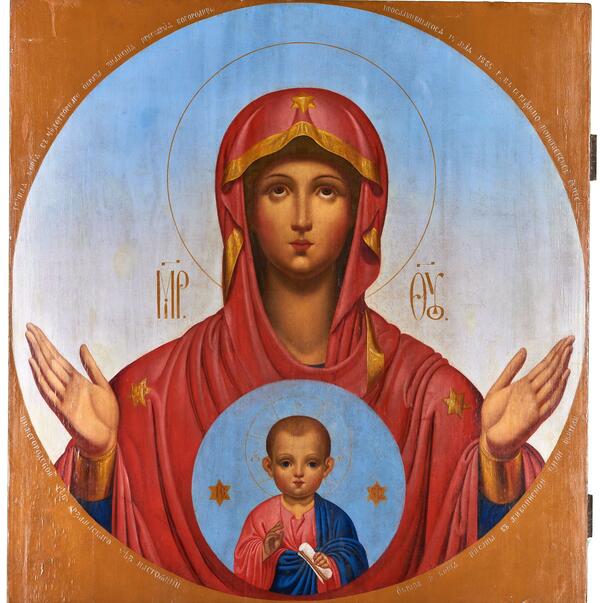The exhibition “Balakhna Icons” presents the story of the religious life of the town.
Balakhna has long been known for its strong faith. In the 16th–17th centuries, it was second only to Nizhny Novgorod in terms of the number of churches. It was also a large icon-painting center of the Nizhny Novgorod’s Volga region. A doctoral candidate in History, Veronika Nikolaevna Belyaeva identifies entire dynasties of icon painters who lived in the region in the 17th century; among them are the brothers Nikita, Andrey and Grigory Terentyev, the latter of whom became an honored royal icon painter in 1670.
Most of the icons on display at the exhibition were created in Moscow and Balakhna between the 17th and 19th centuries; of particular interest is the monument of the second half of the 15th century, which originated in Novgorod.
Since the second half of the 17th century, the Nizhny Novgorod’s Volga region has become one of the major hubs of Old Believers’ traditions, which inevitably influenced the choice of sacred subjects and original iconographic style.
In the churches of the Balakhninsky district, wooden sculptures and high reliefs were often found — both as examples of freestanding church sculptures and as part of iconostases. To date, the Balakhna Museum Complex houses more than 160 icons of the 15th–19th centuries from various Balakhna churches.
The art historian Count Yury Alexandrovich Olsufiev, who visited Balakhna in the late 1920s, was the first to study these artifacts.
The icon collection of the Balakhna Museum Complex of History and Art has not been introduced into scientific circulation until today, but it is of great scientific and artistic interest.
Exhibits are marked with AR stickers for identification purposes.
Balakhna has long been known for its strong faith. In the 16th–17th centuries, it was second only to Nizhny Novgorod in terms of the number of churches. It was also a large icon-painting center of the Nizhny Novgorod’s Volga region. A doctoral candidate in History, Veronika Nikolaevna Belyaeva identifies entire dynasties of icon painters who lived in the region in the 17th century; among them are the brothers Nikita, Andrey and Grigory Terentyev, the latter of whom became an honored royal icon painter in 1670.
Most of the icons on display at the exhibition were created in Moscow and Balakhna between the 17th and 19th centuries; of particular interest is the monument of the second half of the 15th century, which originated in Novgorod.
Since the second half of the 17th century, the Nizhny Novgorod’s Volga region has become one of the major hubs of Old Believers’ traditions, which inevitably influenced the choice of sacred subjects and original iconographic style.
In the churches of the Balakhninsky district, wooden sculptures and high reliefs were often found — both as examples of freestanding church sculptures and as part of iconostases. To date, the Balakhna Museum Complex houses more than 160 icons of the 15th–19th centuries from various Balakhna churches.
The art historian Count Yury Alexandrovich Olsufiev, who visited Balakhna in the late 1920s, was the first to study these artifacts.
The icon collection of the Balakhna Museum Complex of History and Art has not been introduced into scientific circulation until today, but it is of great scientific and artistic interest.
Exhibits are marked with AR stickers for identification purposes.

